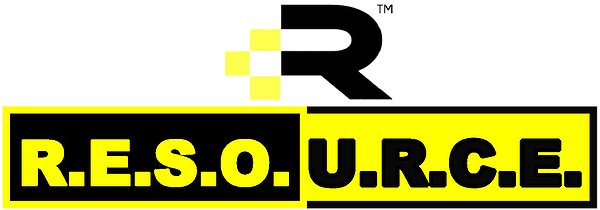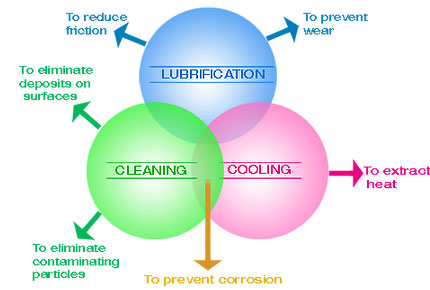

![]()
HHCPPL is one of the leading lubricant manufacturers for the initial filling of passenger cars, trucks and agricultural or construction machines. With a comprehensive range of lubricants for all automotive applications and the R. E. S. O. U. R. C. E. TECHNOLOGY that is unique worldwide. HHCPPL truly sets new standards in the automotive lubricants segment. Upon starting the engine, engine oils with R. E. S. O. U. R. C. E. TECHNOLOGY reached the places where their protective film is urgently needed quicker and easier, even under extreme conditions – providing reliable protection throughout the entire service life of the oil. The driver therefore benefits from easier start processes and less wear together with a reduction in fuel consumption – and oil consumption is also significantly lower than in conventional oils of the same viscosity class. Find out more about our pioneering engine oil with R. E. S. O. U. R. C. E. TECHNOLOGY.

WHAT IS THE ROLE OF A LUBRICANT?
Any vehicle owner knows that lubricants are vital to the correct operation of your engine; in particular they reduce wear.
But it also has other, less well-known functions:
CONTROL TEMPERATURE: Cools hot areas of an engine and moving parts.
REDUCES FRICTION: A lubricant helps to improve engine efficiency and helps to reduce fuel consumption.
PROTECTION: Protects mechanical parts against wear and corrosion: guaranteeing long life and efficiency of the engine.
KEEPS THE ENGINE CLEAN: It helps to guarantee long engine life and helps to keep all engine parts in a good and clean condition, while evacuating any impurities to the oil filter and through oil changes.
WHY USE OIL ADDITIVES?
Engine oil has two primary purposes:
Lubricate the moving parts of your engine, which minimises friction, and protect metallic surfaces from the process known as corrosion. It is rare, however, for an engine oil to be able to do both of these things without additional chemicals or oil additives.
The 3 main functions of oil additives are illustrated below:

We add oil additives to all of our lubricants.
Normally, 10 to 30% of each lubricant is composed of oil additives and the remaining part is composed of base oils.
Engine oil has a tendency to lose its properties over time.
It should therefore be replaced on a regular basis in order to ensure that your engine lasts as long as possible.
Changing the oil is a straightforward operation that removes all the impurities from the engine.
There is, however, a technical aspect to it – choosing the right engine oil is essential. Consult our guide to find out which TAIYOL Lubricant is best suited to your automotive engine.
Because brake fluid absorbs moisture over time, it needs to be changed in order to ensure that it retains its properties and to prevent mechanical parts from wearing out.
Draining out brake fluid is a risky operation if not carried out properly – air bubbles can get into the circuit. Be careful – brake fluid is highly corrosive. It is therefore a good idea to protect the various components which may come into contact with it.
The manufacturer's service manual will tell you how often you should check the level, and how frequently it should be replaced. As a general rule, the brake fluid level should be checked every 100 km or every month or so.
There are only 3 main types of anti-freeze:
Green Anti-freeze:
These are the traditional type of anti-freeze most commonly used in North America. Their silicate and phosphate composition provides protection for aluminium and bare iron surfaces. They need to be changed every 30,000 miles or once every two to three years.
OAT (Organic Acid Technology) anti-freeze:
These contain ingredients such as 2-EHA, sebacate and other various organic acids. Unlike green anti-freezes, they generally do not contain silicates or phosphates. Usually, OAT-based coolants will be dyed a different colour to green anti-freeze. They must be changed once every five years or 150,000 miles.
HOAT** (Hybrid OAT)** anti-freeze:
These use organic acids but not 2-EHA and usually include silicates to provide protection for aluminium surfaces. HOAT anti-freezes are used by many European car manufacturers, although they are also used by American companies such as Chrysler and Ford. A HOAT coolant will need to be changed every five years or 150,000 miles. In recent years, anti-freeze manufacturers have been creating universal coolants that can be used with all vehicle types. These extended-life coolants only differ in colour. Some may be orange while others may be dyed blue or purple.
Anti-freeze has the same purpose as coolant, but it is even more resistant to the cold. These higher performance levels should be sought in places with extreme weather conditions.
Any oil storage, such as tanks containing heating oil, diesel and waste oil, should be routinely checked and maintained to avoid the risk of causing pollution, through leaks and spills. For larger oil storage solutions on commercial sites, the tank may also need to comply with the Oil Storage Regulations.
It is always a good idea to keep your domestic heating oil tank in good condition, and ideally it should be properly bounded (contained within a sealed area or unit), so that in the event of a leak, the oil will not soak away into the ground.
This can cause a great deal of damage to your property and the wider environment and can be very costly to clean up.
As the owner you may be liable and even face prosecution if the oil pollutes groundwater or a nearby river. You may wish to check your home or business insurance policy to make sure you are covered for such incidents.
Recycling the used oil from your car is simple and good for the environment.
After draining the oil from your car’s crankcase, pour the oil into a clean, leak-proof container with a screw-on top. Many household containers are suitable, including original motor oil containers.
Never use containers that have held food, beverages or household chemicals such as bleach. Make sure that the container is clearly labelled “Used Oil,” kept out of the reach of children and pets and that it has a secure lid so it cannot spill. You can purchase containers specifically designed for carrying used motor oil at automotive supply stores.
Take the container to the nearest used oil collection centre. If your community doesn’t have a collection centre, check with your local service station or an automobile maintenance facility such as a lube centre, repair shop or car dealership. You can also look for the nearest “oil drop.” This is a petroleum industry symbol indicating that used oil is collected for recycling/reuse.
Lubricants behave differently at high and low temperatures.
An oil can, in effect, be characterised by its viscosity, its flow resistance or by the thickness of its oil film.
Viscosity varies according to temperature in the following way: the higher the temperature, the more fluid and less viscous the oil will be.
To ensure that your vehicle performs optimally, your oil should retain a certain level of viscosity in all weather conditions:
It should remain fluid at low temperatures (to make cold starts easier) and viscous at high temperatures (in order to provide protection and sealing).
The grades that have been optimised for each of your oils are detailed in your service manual. For your easy reference the Viscosity Chart for Engine Oil is mentioned below: